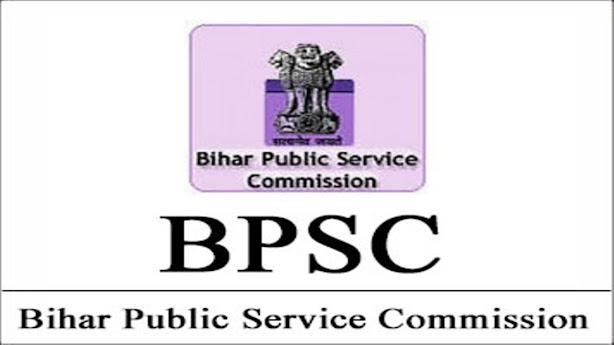BPSC 66th Mains (GS - II)
Polity
Indian federal structure is constitutionally oriented towards the central government. Explain.
Approach
- Constitutional stand: Unitary or Federal
- Discuss unitary and federal features of Indian constitution
- Conclusion
Answer
Unlike other typical federation like USA and Australia, India's political setup is somewhat different. It is believed to be 'Quasi-federal' in nature, i.e., a federal setup with unitary bias.
Federal features of Indian constitution
Division of powers between centre and state - Like other federations, in India too centre and state government both have constitutional status and both derives their powers directly from the constitution.
Schedule 7 of the Indian constitution divides the legislative powers between centre and states. The Schedule 7 of the constitution contains 3 lists:
- Union list (100 Subjects)
- State list (61 Subjects)
- Concurrent list (52 Subjects)
Rigidity of the constitution and its supremacy - In a federal setup the constitution is binding upon both centre as well as states and need not only centre alone to amend the constitution, i.e., the constitution is rigid.
Here, in India also the constitutional amendment in some major areas which can have effect on the distribution of powers between centre and states requires Union as well as states approval.
These major areas are given below:
- Schedule 7 of the constitution which contains legislative lists divided between centre and states.
- Representation of states in the parliament
- Election of the president
- Extent of executive powers of the centre and states
- Legislative relations between centre and states
- High courts and Supreme courts
- GST council
- Article 368 itself which deals with the procedure of amendment
Features of Indian constitution which are deviant/distinct from the typical federation (Unitary features of the constitution) -
- A single unified constitution for centre as well as states - In a federal setup centre and states have their own respective constitution.
- Single citizenship - Despite havind dual government, i.e., government at centre and government at state level; there exists the concept of single citizenship in India.
- An integrated judicial system - Unlike other federation, in India there is only one Supreme court, and all other courts are sub-ordinate to it.
- Transformation from federal to unitary system - During emergency, the distribution of power totally shifted in favour of centre. The centre will get the power even to legislate in the matter listed in State list. Thus, Indian political system is unique on its own and is designed to function both as federal as well as unitary system as per the need of time.
- The power of parliament to change the name, area and boundary of states - Under Article 3 of the constitution, the parliament has the power to change the name, area and boundary of the states even without the consent of the state concerned. Thus, the states do not enjoy the right to exist and function as an independent unit of the federation. Therefore, Indian federation is known as "Indestructible union of destructible states".
- Unequal distribution of powers between centre and states - The Schedule 7 of the constitution which distributes the powers between the centre and the states is strongly in the favour of centre as: Union list contains not only more number of subjects but also these subjects are by nature very important where as State list contains subjects of local importance like police, public health, local self-government, etc. and over which the states do not have exclusive claim. Centre also can legislate over these subjects under certain conditions like when it is very much required in the interest of nation, when national emergency is in operation, to establish any foreign relation, when presidential rule is imposed on state and when two or more states asked the parliament to do so. Apart from that the parliament's claim over Concurrent list is superior and the subjects which are not listed in these three lists comes under the jurisdiction of centre only.
- Appointment of governor by the president - In India, the governor is appointed by the president and holds the office during the pleasure of the president. Thus, through the president, centre is in the position to influence the state affairs.
- Supremacy of centre in constitutional amendment - Except some major areas mentioned earlier which affect the distribution of power between centre and states, centre alone can amend the major portion of the constitution.
- All India services - All India services officers are appointed and trained by the centre. Though they work at the senior position in the state administration, their larger control lies in the hands of centre.
- Other all India bodies like CAG, Election Commission, CBI, ED, etc. - Though they are appointed by the president and can be removed by the president with the approval of parliament, centre can use them against state. Many a time states complained about the bias nature of these offices against them.
- Weak financial condition of the states - The sources of income of states are very much limited and states often have to depend upon centre for revenue/grants.
- Unequal representation of states in parliament as well as nomination by the president weakens the federal spirit.
Therefore, we can say that India is no doubt a federal, but we are a federation of our own kind with flexibility to change its nature from federal to unitary. Thus, we can say that Indian federal structure is constitutionally oriented towards the centre.
To know more about Indian Political Setup, Click here,
BPSC 66th Mains - Polity (GS - II)
Question 1: "The role of the President of India is like an old man in family who has all the authorities, however he cannot do anything if the naughty young members of the family do not listen him". Evaluate.
Question 3: "The uneven development of Indian states has created many socio-economic and political problems." Critically analyse the statement with special reference to Bihar.
Question 4: "Parliament of India is an effective forum of national integration." Discuss.
BPSC 66th Mains - History (GS -I)
Question 1: What were the causes of the Santhal revolt? What were its course and outcome?
Notes to boost your Preparation
Optional Notes
Note - This is my Vision IAS Notes (Vision IAS Class Notes) and Ashutosh Pandey Sir's Public Administration Class notes. I've also added some of the information on my own.
Hope! It will help you to achieve your dream of getting selected in Civil Services Examination 👍





